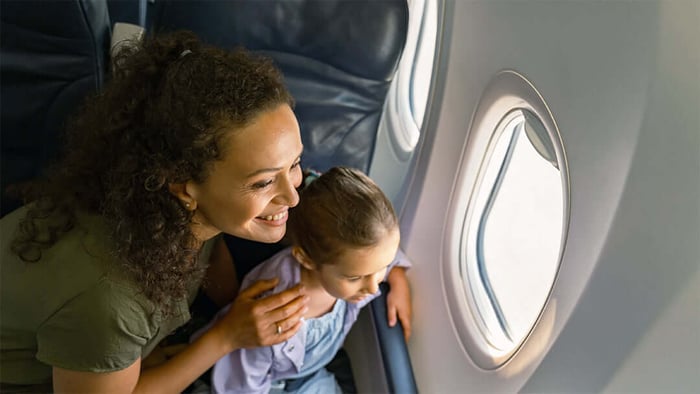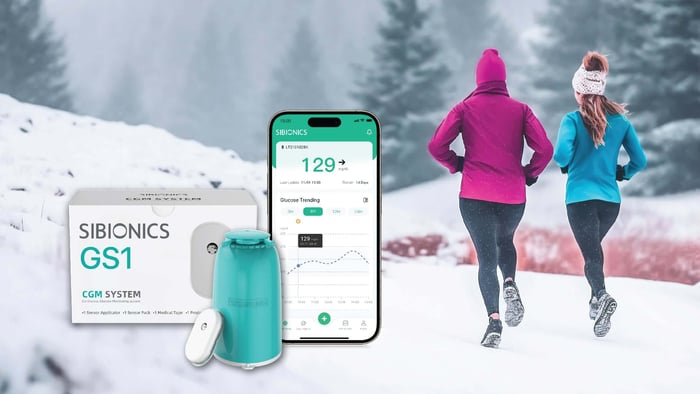As the crisp air carries the familiar scent of cinnamon and pine, and twinkling lights illuminate the streets, it can only mean one thing: the holiday season has arrived! The air is buzzing with holiday anticipation, the promise of shared moments, and the excitement of traveling lingers in every festive decoration.
You’re probably planning a vacation while reading this blog. Planning a relaxing trip during the holiday can quickly become stressful, especially for someone living with chronic diseases like diabetes. To make your well-deserved holiday vacation a smooth and rewarding one, here are a few important things to keep in mind if you need to wear a CGM, use insulin, prescription medications, or other diabetic supplies throughout the entire trip.
Plan and Be Prepared

Keeping your glucose level stable while enjoying the holiday should be a top priority. Before the excitement of your upcoming travels sets in, take the time to plan and prepare your diabetes supplies inventory, making sure that you have more CGM sensors, insulin syringes and/or pen needles, glucose gels and/or tablets, and other diabetes supplies than you’ll need during the vacation. For example, most CGM sensors provide glucose monitoring for 14 days. So, it’s a good idea to pack enough CGM sensors that will last you longer than your vacation, in case they fall off or malfunction during the trip.
If you’re relying on insulin to regulate your glucose levels, remember that your diet may change when you’re exploring new places and local cuisine. You can visit your doctor for a checkup, and discuss about whether you should adjust your insulin dosage during the the vacation. Also, consider packing twice the amount of insulin that you need in separate bags, which prevents you from running out in the event of lost luggage, canceled flights, or changed plans. Additionally, the festive mood might entice you to consume more carbs and sugars than intended.
Get Doctor’s Letter Ready
When you’re traveling by air, going through the security checkpoints needs some extra effort. It would save you lots of trouble and time by showing the security officer a letter from your healthcare provider, explaining the medical necessity of your CGM sensor and other medications. This letter should help exempt your carry-on bag, in which you store your spare CGM devices and other diabetes supplies, from going through the X-ray machine. Full-body scanners at the security checkpoint may cause CGM sensors to malfunction, too. When arrive at the airport, you could ask for a hand inspection, which is a lawful right to do so.
You should also avoid packing your CGM sensors or diabetes supplies in your checked luggage, as not only the X-ray machine but the rough handling, and the exposure to extreme temperatures can wreck their effectiveness. Store your glucose monitoring devices, insulin, fast-acting carbs, and medications properly according to their storage requirements designated by manufacturers.
Request a Copy of Prescriptions
Having a copy of your prescriptions for your current medications, including insulin can prove invaluable. This may come in handy when you need to replace any missing medications during your travel. Furthermore, search for the most accessible pharmacies and clinics close to where you’re staying.
Be Aware of Time Zone Differences

If you’re traveling across different time zones, take into account the impact on your CGM data and glucose management. One of the primary factors affected by time zone changes is the timing of the recorded data. Most CGMs, like the SIBIONICS GS1, update you with real-time glucose data every five minutes. Failing to adjust time settings correctly may result in confusion and potential misinterpretation of your glucose trends.
Beyond the technical aspect, you must also consider the impact of time zone changes on your daily routine, particularly if you use an insulin pump in conjunction with your CGM. Insulin delivery schedules and basal rates may need to be adjusted to align with your new time zone, preventing disruptions in glucose control.
Stay Hydrated and Mindful of Nutrition
First and foremost, hydration plays a key role in overall health and glucose management. Traveling, especially by air, can cause dehydration due to the dry cabin air. well-hydrated. Dehydration can elevate your glucose levels, therefore, try to drink water consistently to stay well-hydrated. Adequate water intake may also allow you to be more active on the plane, increasing the chance that you visit the bathroom and walk around the cabin. Keep yourself busy on the plane, as being seated for too long is never good for anyone.
After arriving at your destination, remember to maintain a balance between indulgence and healthy food choices. While it's natural to want to savor local delicacies, being mindful of portion sizes and making informed choices about your carbohydrate intake can contribute to more stable glucose levels. Last but not least, keep a close watch on your glucose levels in between meals with a CGM that can provide you with reliable, real-time glucose data.
Choose Activities Wisely

Wherever you’re traveling, don't overdo your physical activities in extremely hot or cold temperatures. If you plan to wear a CGM sensor while traveling, try to stay away from hot saunas, snorkeling, surfing, and high-speed water sports, because high temperatures or rapid water flow can increase the risk of sensor malfunction or detachment.
Instead, plan some moderate guided walking tours, or explore some famous local hiking trails. Consider destinations with diverse cultural experiences, providing opportunities to indulge in healthy, locally sourced meals that align with your dietary preferences. In addition to this, stay adequately hydrated and take regular breaks to monitor your glucose levels. Also, physical activities can cause rapid changes in glucose levels, so don’t panic when the readings on your CGM device seem a bit higher than you expected.
To Wrap Up
Traveling with diabetes is indeed an arduous journey, but with careful planning and preparation, it can turn out to be a smooth and satisfying experience. Hopefully, with all the tips offered in this blog, you can focus on enjoying your journey while effectively managing your glucose levels. Safe travels!
[CGM]SIBIONICS GS1 CGM-Continuous Glucose Monitoring System
![[CGM]SIBIONICS GS1 CGM-Continuous Glucose Monitoring System](http://www.sibionicscgm.com/cdn/shop/files/Sibionics-GS1-CGM-System-Continuous-Glucose-Monitoring_720x720.webp?v=1758119024)
€62,99
14-Days Continuous Glucose Monitoring Highly Accurate Sensor Readings Exportable AGP Reports Shareable Real-Time Glucose Data Customizable Glucose Alarm User-friendly App Calibration Free No Scanning IP28 Waterproof … read more





